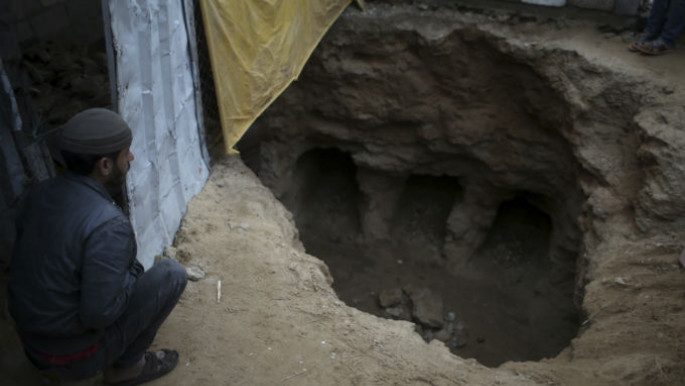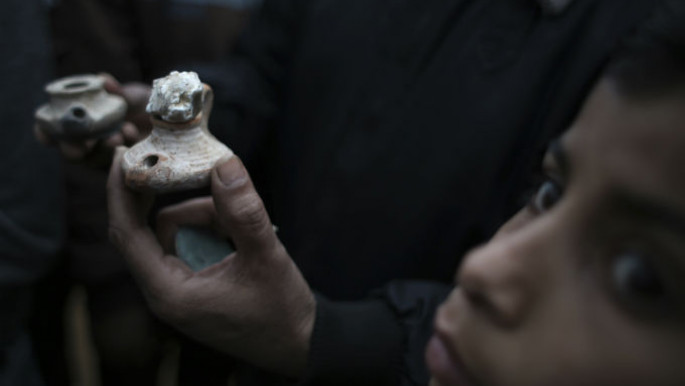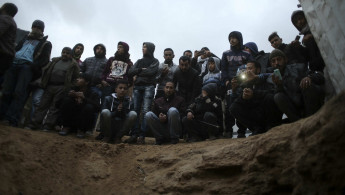Ancient grave complex uncovered in Gaza backyard
For many Gazans, it was just another rainy winter day in the densely-populated enclave. For Abdul Karim al-Kafarnah, the heavy winter downpour led him to discover something truly out of the ordinary. According to reports, rain water gushed down a hole in his back garden and uncovered a set of underground steps that led to an ancient Roman grave complex.
Twenty-four-year-old Abdul Karim lives in the Beit Hanoun district of the Gaza Strip by the Israeli border, which suffered intensive bombardment during the 2014 Gaza war between the Israeli army and Palestinian fighters.
The family home was destroyed and the surrounding plots heavily churned up, leaving extensive craters in the ground.
The flash-flooding earlier this week led him to one particular spot, where - on removing a large stone - he found a staircase leading four metres (13 feet) down into an ancient tomb.
"I discovered the place where the water was falling in," he told AFP.
"I lifted the stone and a stale smell came out."
 |
|
| Abdelkarim al-al-Kafarnah looks up from inside the ancient grave complex he discovered in his back garden [AP] |
As he descended the ancient staricase, he discovered a total of nine graves, some with piles of bones in them - seemingly containing more than one body each. He also found votive lamps and other pottery.
 |
|
| The complex consists of nine graves [AP] |
Gaza-based archaeologist Ayman Hassouna said the finds suggested the grave dated back to the Roman era, approximately 2,000 years ago.
"The burial and excavation methods in this tomb date it back to the Roman period but it may have continued in use into the early Byzantine period (5th to 7th centuries AD)," he said.
 |
|
| Some graves had piles of bones in them, indicating there was more than one body to each grave [AP] |
Professor Jodi Magness, an archaeologist at the University of North Carolina, said such tombs were relatively common in the Holy Land between 100 BC and 100 AD, and again between 300 and 500 AD.
"Typically, these were family tombs, or sometimes larger tomb complexes could be divided up among families," she told AFP.
 |
|
| Gazan local Abdulkarim al-Kafarnah also found votive lamps and other pottery in the burial site [AP] |
Gaza was a prosperous port in the Roman and early Byzantine periods and boasted many ancient monuments that have since been lost.



![sudan women [getty] sudan women [getty]](/sites/default/files/styles/image_330x185/public/media/images/5019D7F4-52AF-4377-8A05-885D27476479.jpg?h=d1cb525d&itok=tKXV7r-W)